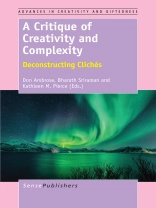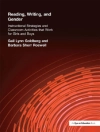In an increasingly complex world the natural human inclination is to oversimplify issues and problems to make them seem more comprehensible and less threatening. This tendency usually generates forms of dogmatism that diminish our ability to think creatively and to develop worthy talents. Fortunately, complexity theory is giving us ways to make sense of intricate, evolving phenomena. This book represents a broad, interdisciplinary application of complexity theory to a wide variety of phenomena in general education, STEM education, learner diversity and special education, social-emotional development, organizational leadership, urban planning, and the history of philosophy. The contributors provide nuanced analyses of the structures and dynamics of complex adaptive systems in these academic and professional fields.
Inhaltsverzeichnis
Section 1: Introduction; Creative Emergence, Order, and Chaos: Grappling with the Complexity of Complexity Theory; Section 2: Complexity in STEM Processes and Structures; Learning: Creation or Re-creation? From Constructivism to the Theory of Didactical Situations; Investigating Mathematical Creativity in Elementary School Through the Lens of Complexity Theory; Esther Levenson On the Edge of Chaos: Robots in the Classroom; Section 3: Interdisciplinary Perspectives on Creative Complexity The Ubiquity of the Chaos-Order Continuum: Insights From Diverse Academic Disciplines; Organisational Leadership for Creativity: Thriving at the Edge; Complex Regenerative Creativity; Pareto Optimum Effi ciency Between Chaos and Order When Seeking Consensus in Urban Planning; Subjectivity, Objectivity, and the Edge of Chaos; Section 4: Creative Educational Frameworks and Initiatives; Seeking Chaotic Order: The Classroom as a Complex Adaptive System; Expansive Notions of Coherence and Complexity in Education; Complexity, Patterns, and Creativity; A Shakespeare Festival Midwives Complexity; The Anthropology of Twice Exceptionality: Is Today’s Disability Yesterday’s (or Tomorrow’s) Evolutionary Advantage? A Case Study with ADD/ADHD; Mentoring the Pupal: Professional Induction Along the Chaos-Order Continuum; Section 5: Social-Emotional Dynamics as Complex and Potentially Creative; Helping Students Respond Creatively to a Complex World; Toward the Pattern Models of Creativity: Chaos, Complexity, Creativity; Emotions, Complexity, and Intelligence; Contributors 301; Subject Index.












